CDC Guidelines, Reopening and Stimulus Checks - How People Really Feel
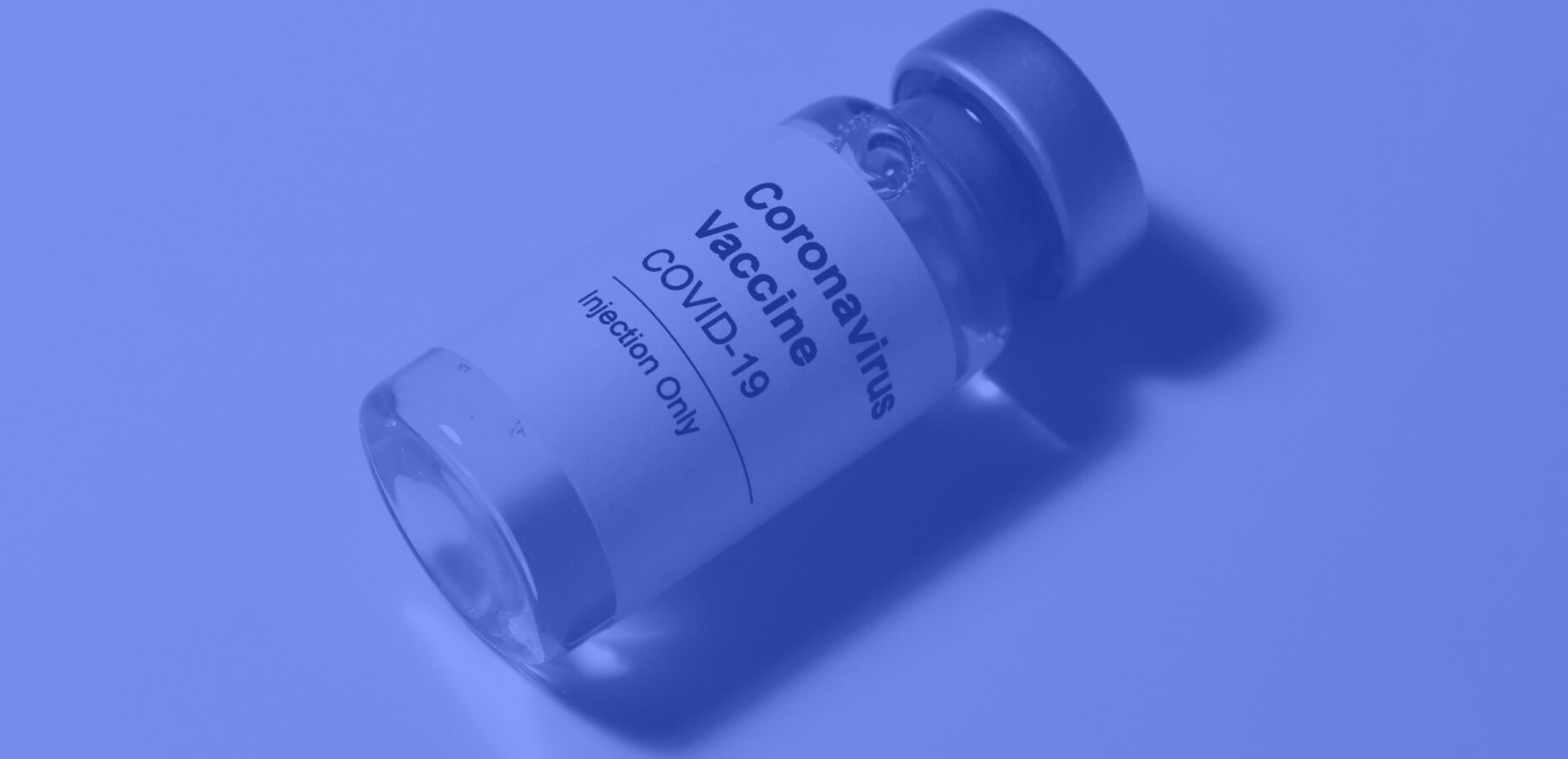
50% of women trust the CDC, compared to 38% of men.
Americans can all take a collective breath now as the U.S. prepares to fully reopen back to pre-pandemic standards. People are starting to resume the regular activities they’ve missed over the last year like dining in restaurants and going to the movies. But as the U.S. continues to vaccinate, how are people really feeling about going back to normal and how have their feelings changed over the last year? Invisibly used it’s Realtime Research tool to poll 1277 Americans to find out their opinions on the trustworthiness of the CDC, what they did with their stimulus checks, and how they feel about their state’s reopening plan.
Highlights
- 33% of people think the information given by the CDC is completely untrustworthy compared to 23% 10 months ago, and only a slight majority of respondents think the CDC is trustworthy.
- 18-24 years old were most likely to trust CDC guidelines, but only at 58%.
- 50% of women trust the CDC, compared to 38% of men and 22% of non-binary respondents.
- 28% of people currently believe their state’s reopening is going too slow, compared to 23% who think it’s moving too fast. 29% are happy with the progress.
- For all genders, respondents primarily used their stimulus check for paying bills, followed by savings, home improvements and travel.
Results
When asked which activity they are returning to doing now that they weren’t as willing to do last year, over 63% of respondents said they were now getting haircuts compared to 51% who were willing to go out for one nine months ago. 61% of people are willing to see the dentist now, compared to only 49% in July 2020. More than half of people, 55%, were now willing to return to work in an office, and the same percentage is also willing to now visit dining establishments. The biggest jump in comparison to results from nine months ago came from people now returning to the gym with 47% saying that they now would compared to only 30% who said they would in July 2020.
When comparing the data to an identical survey conducted in July, we see that 10% more people now completely distrust the CDC, a jump from 23% to 33%. Alternatively, 39%of people do consider the CDC trustworthy compared to 29% who considered it trustworthy last summer.
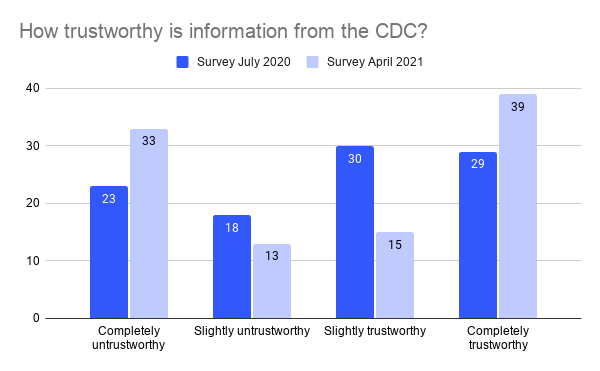
44% of respondents under the age of 18 think the CDC is untrustworthy compared to 56% who do think the CDC is trustworthy. 42% of respondents in the 18-24 category think the CDC is untrustworthy compared to 58% who think the CDC is trustworthy. 45% of respondents between the ages of 25-40 think the CDC is untrustworthy compared to 55% who think the CDC is trustworthy. 46% of respondents aged 41-54 think the CDC is untrustworthy compared to 54% who think the CDC is trustworthy. 46% of respondents 55 and over think the CDC is untrustworthy compared to 54% who think the CDC is trustworthy.
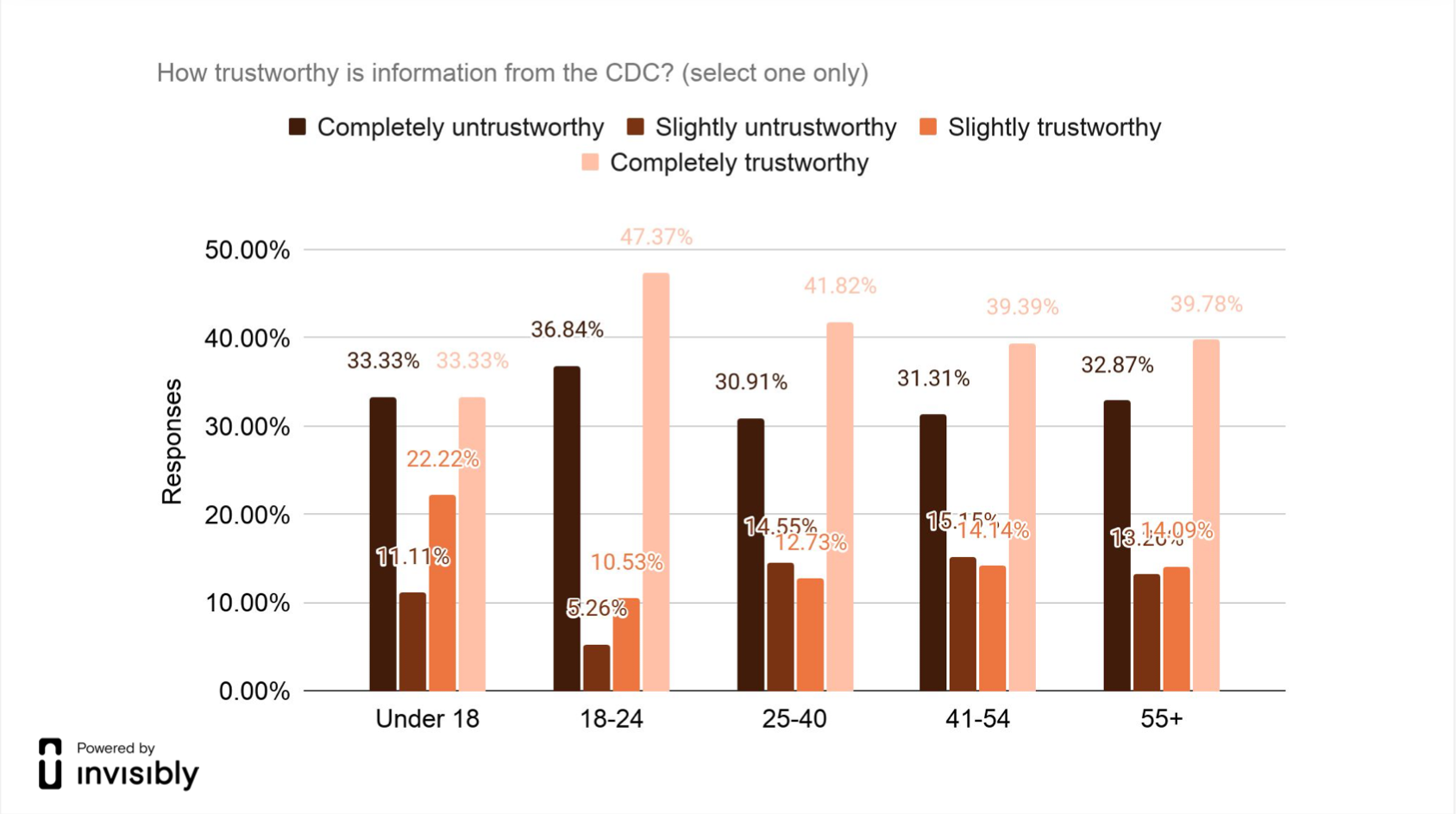
50% of respondents from the most recent survey who identified as female said the CDC was completely trustworthy compared to 38% respondents who identified as male and 23% of respondents who identified as non-binary. 33% of respondents who identified as male said the CDC was completely untrustworthy compared to 27% of people who identified as female and 43% who identified as non-binary.
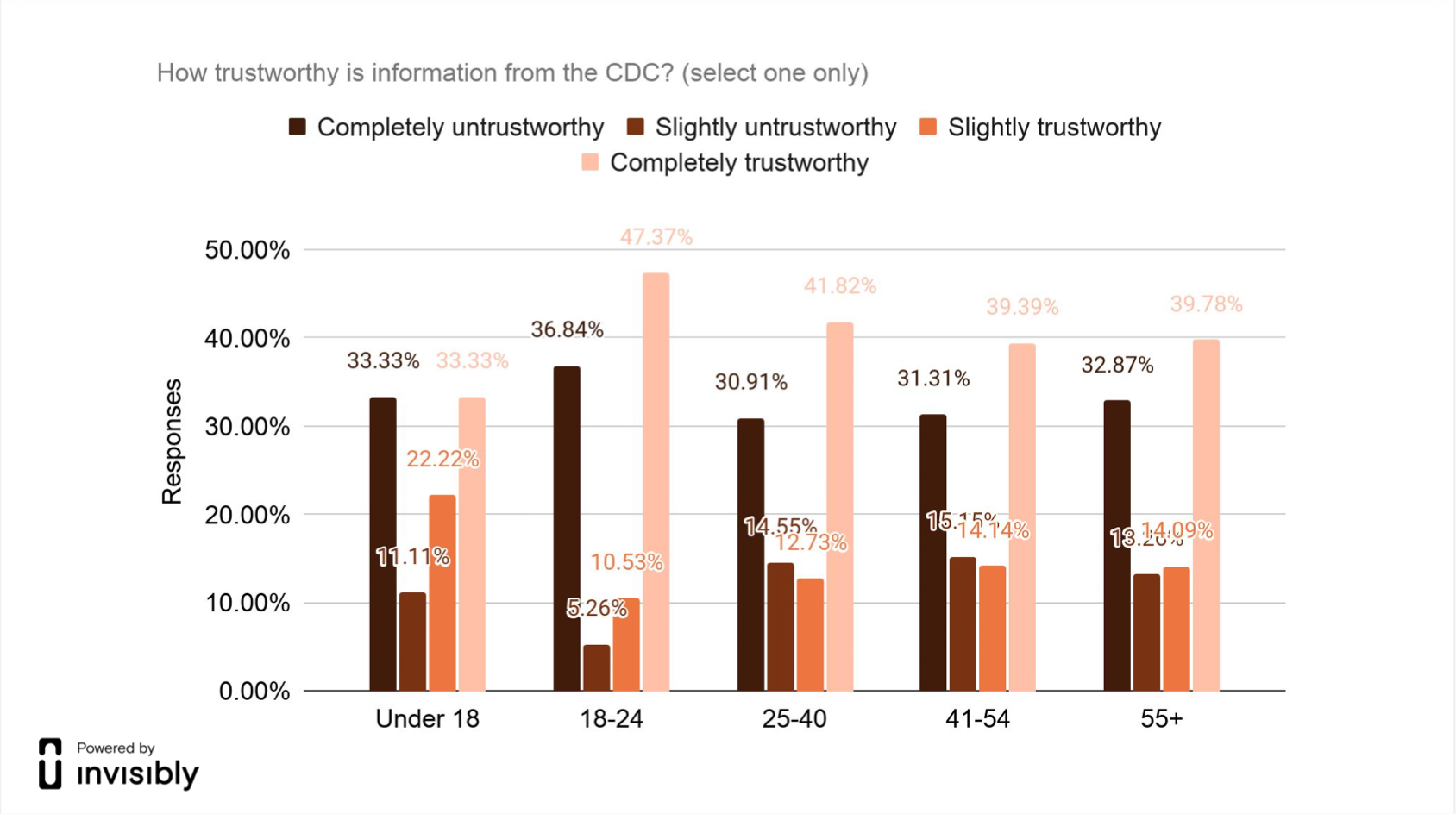
When asked about feelings towards their state’s reopening plan, 29% said they felt positively about it compared with 13% of people ten months ago, while 28% said they thought about it negatively and that it was moving too slowly, compared with 14% who felt that way last year. 23% said they thought negatively of their state’s reopening plan because it was moving too fast compared with 40% of people who felt that way 10 months ago.
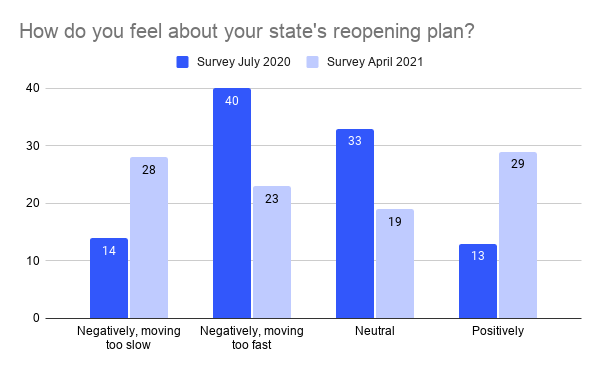
In total, 39% of respondents under 18 said they felt negatively about their state’s plan to reopen. Of them, 28% said their state was moving too slow, and 11% said their state was moving too fast. 47% of respondents aged 18-24 said they felt negatively about their state’s plan to reopen. Of them, 32% said their state was moving too slow, and 16% said their state was moving too fast. 44% of respondents between 25-40 said they felt negatively about their state’s plan to reopen. Of them, 24% said their state was moving too slow and 20% said their state was moving too fast. In the 41-54 age category, 51% of respondents said they felt negatively about their state’s plan to reopen. Of them, 33% said their state was moving too slow and 18% said their state was moving too fast. Of those aged 55 and over, 52% said they felt negatively about their state’s plan to reopen. Of them, 29% said their state was moving too slow and 23% said their state was moving too fast.
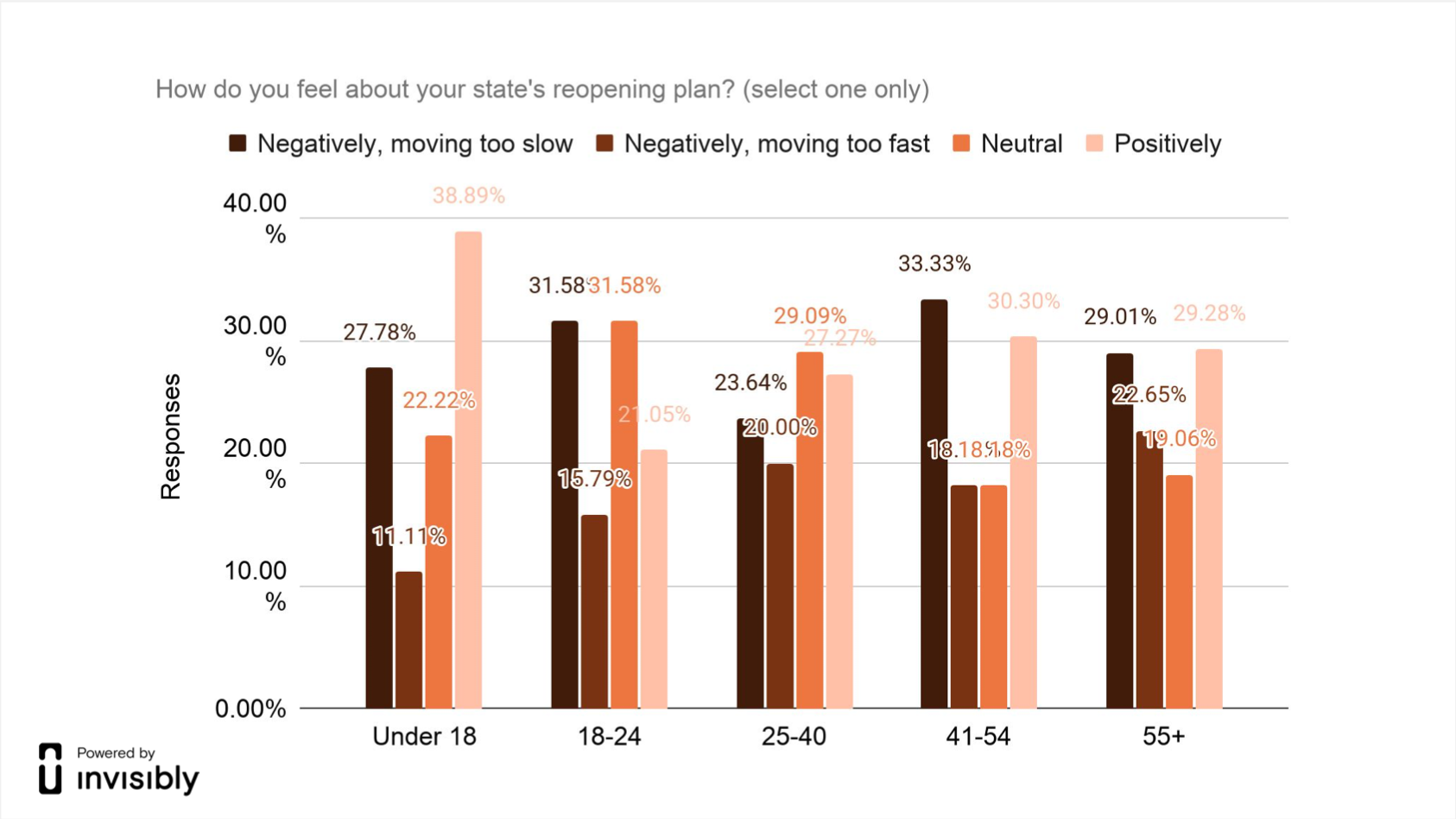
51% of respondents from the most recent survey who identified as male felt negatively about their state’s plan to open. Of them, 32% said their state was moving too slow while 19% said their state was moving too fast. 29% of respondents who identified as male viewed their state’s reopening plan positively. 56% of respondents who identified as women felt negatively about their state’s plan to open. Of them, 31% said their state was moving too fast and 25% said their state was moving too slow. 25% of women felt positively about their state’s reopening. 43% of respondents who identified as non-binary said they had negative feelings about their state’s reopening, of those, 29% said the reopening was going to slow, and 14% said it was going to fast. 31% of non-binary respondents felt positively about their state’s reopening.
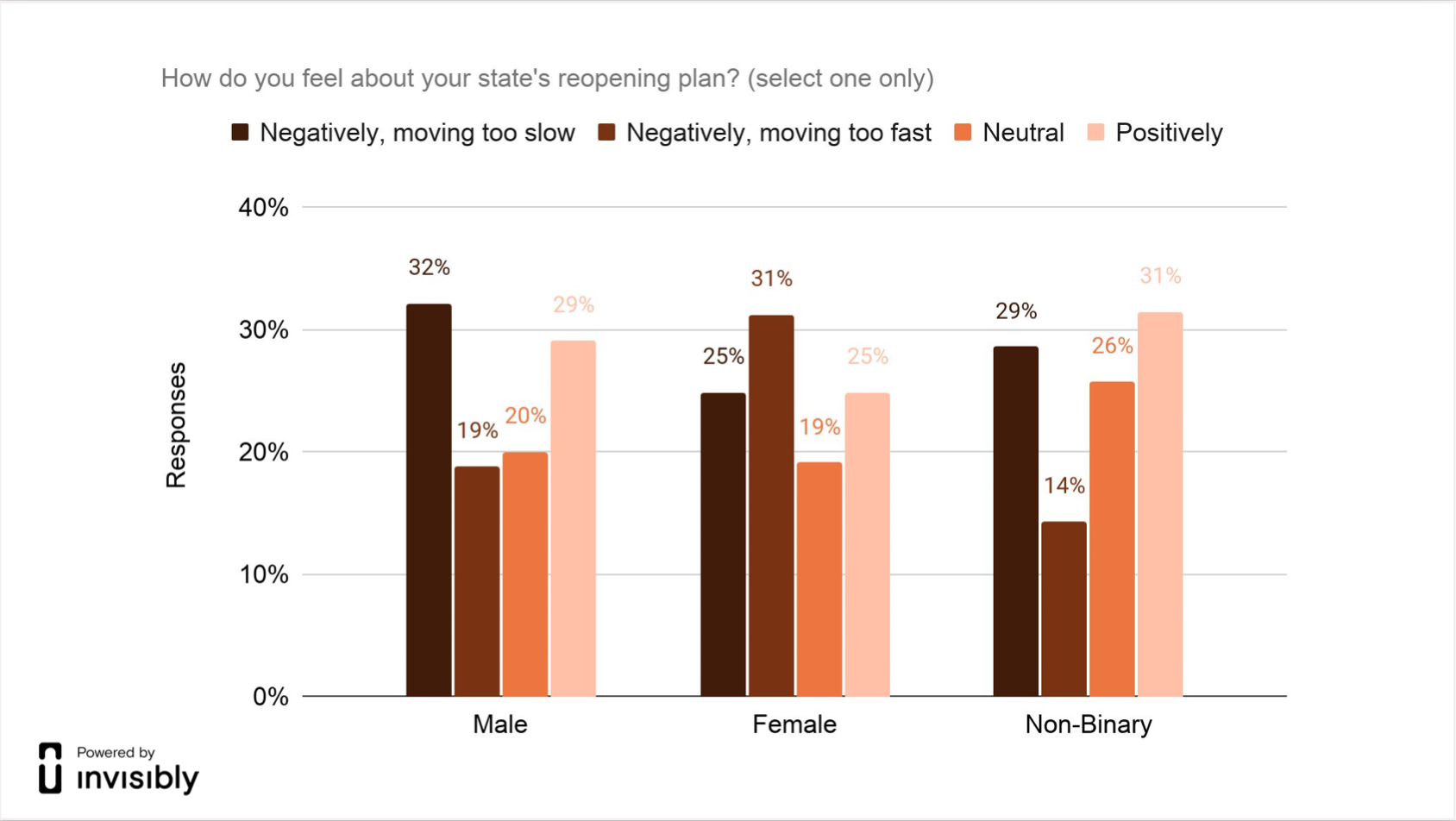
Compared to what they did with their stimulus checks from last year, 3% more people used the latest stimulus check to pay bills, an increase of 4% from 51% to 54%. The same percentage of people today used their stimulus check for savings as they did in the last stimulus period, 32%. Only 4% of people used their stimulus checks for travel compared to 8% back in July. 10% of people used their stimulus checks for home improvements now compared to 9% who did last year.
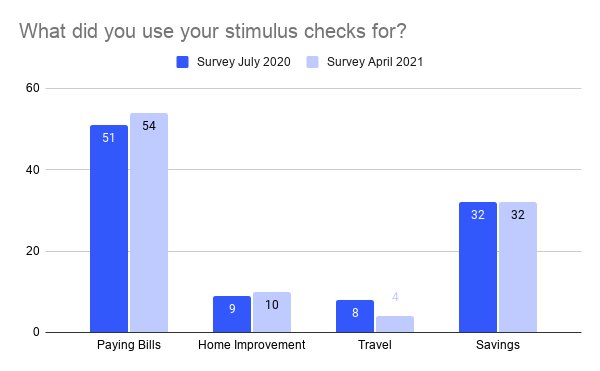
Across all genders, respondents primarily used their stimulus check for paying bills, followed by savings, home improvements and travel.
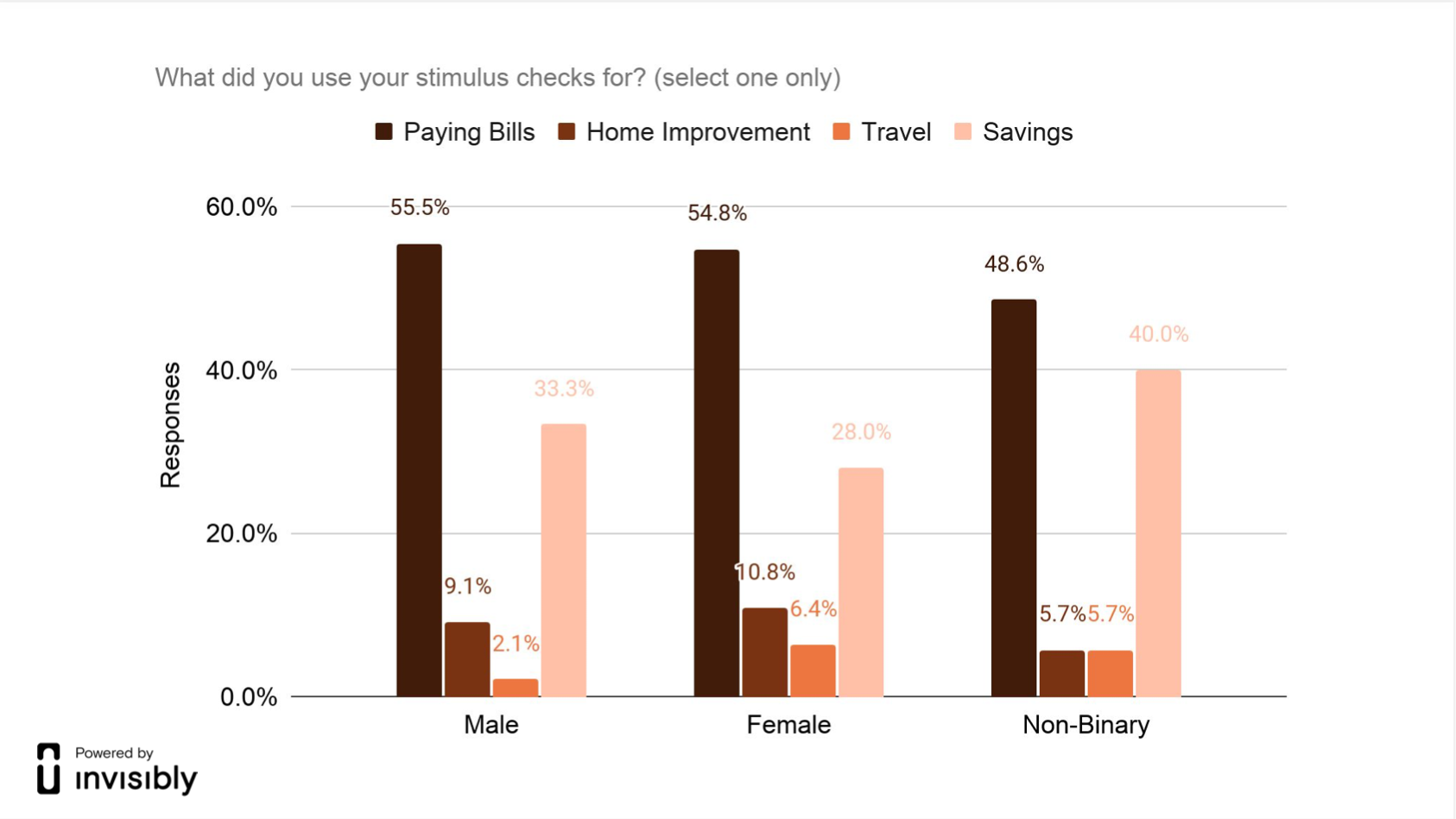
Of the 1277 respondents in the most recent survey, 63% of the respondents identified as male, 30% identified as female, and 7% identified as non-binary.
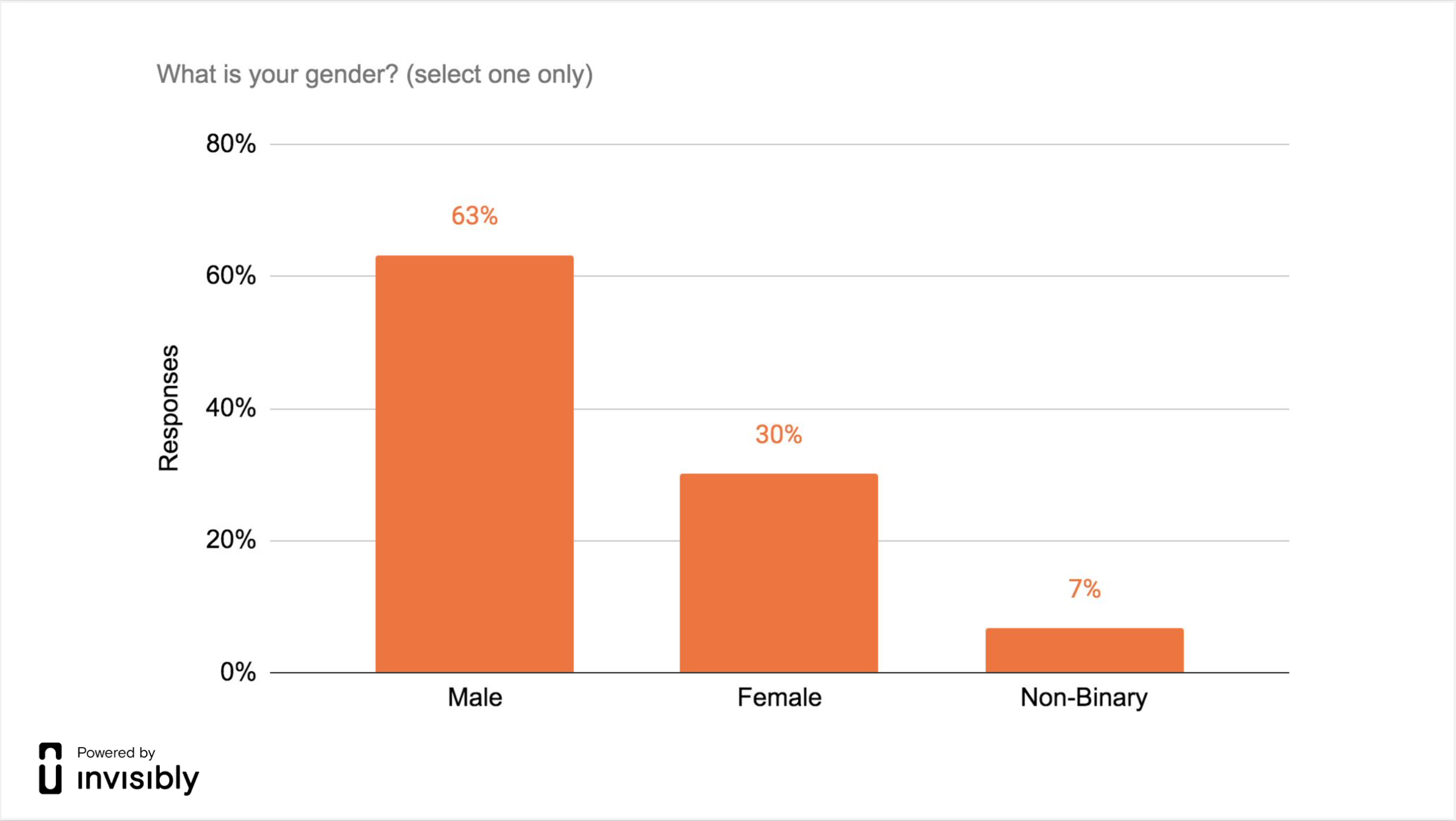
Of the 1277 respondents in the most recent survey, 65% were aged 65 and older, 18% were aged 41-54, 10% were aged 25-40, 3% were between ages 18-24, and 3% were under 18 years old.
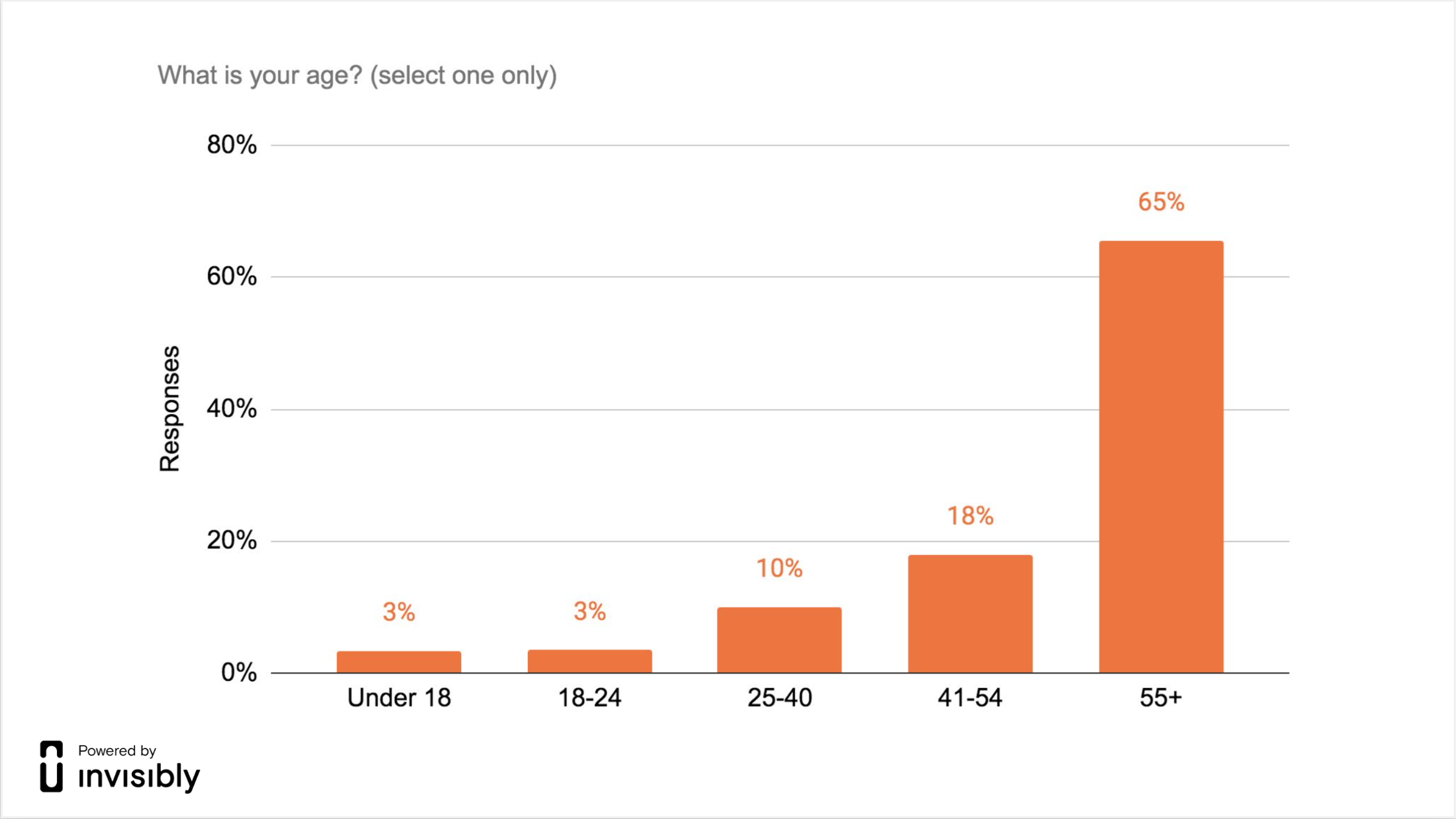 In total, 39% of respondents under 18 said they felt negatively about their state’s plan to reopen. Of them, 28%
said their state was moving too slow, and 11% said their state was moving too fast. 48% of respondents aged
18-24 said they felt negatively about their state’s plan to reopen. Of them, 32% said their state was moving
too slow, and 16% said their state was moving too fast. 44% of respondents between 24-40 said they felt
negatively about their state’s plan to reopen. Of them, 24% said their state was moving too slow and 20% said
their state was moving too fast. In the 41-54 age category, 51% of respondents said they felt negatively about
their state’s plan to reopen. Of them, 33% said their state was moving too slow and 18% said their state was
moving too fast. Of those aged 55 and over, 52% said they felt negatively about their state’s plan to reopen.
Of them, 29% said their state was moving too slow and 23% said their state was moving too fast.
In total, 39% of respondents under 18 said they felt negatively about their state’s plan to reopen. Of them, 28%
said their state was moving too slow, and 11% said their state was moving too fast. 48% of respondents aged
18-24 said they felt negatively about their state’s plan to reopen. Of them, 32% said their state was moving
too slow, and 16% said their state was moving too fast. 44% of respondents between 24-40 said they felt
negatively about their state’s plan to reopen. Of them, 24% said their state was moving too slow and 20% said
their state was moving too fast. In the 41-54 age category, 51% of respondents said they felt negatively about
their state’s plan to reopen. Of them, 33% said their state was moving too slow and 18% said their state was
moving too fast. Of those aged 55 and over, 52% said they felt negatively about their state’s plan to reopen.
Of them, 29% said their state was moving too slow and 23% said their state was moving too fast.
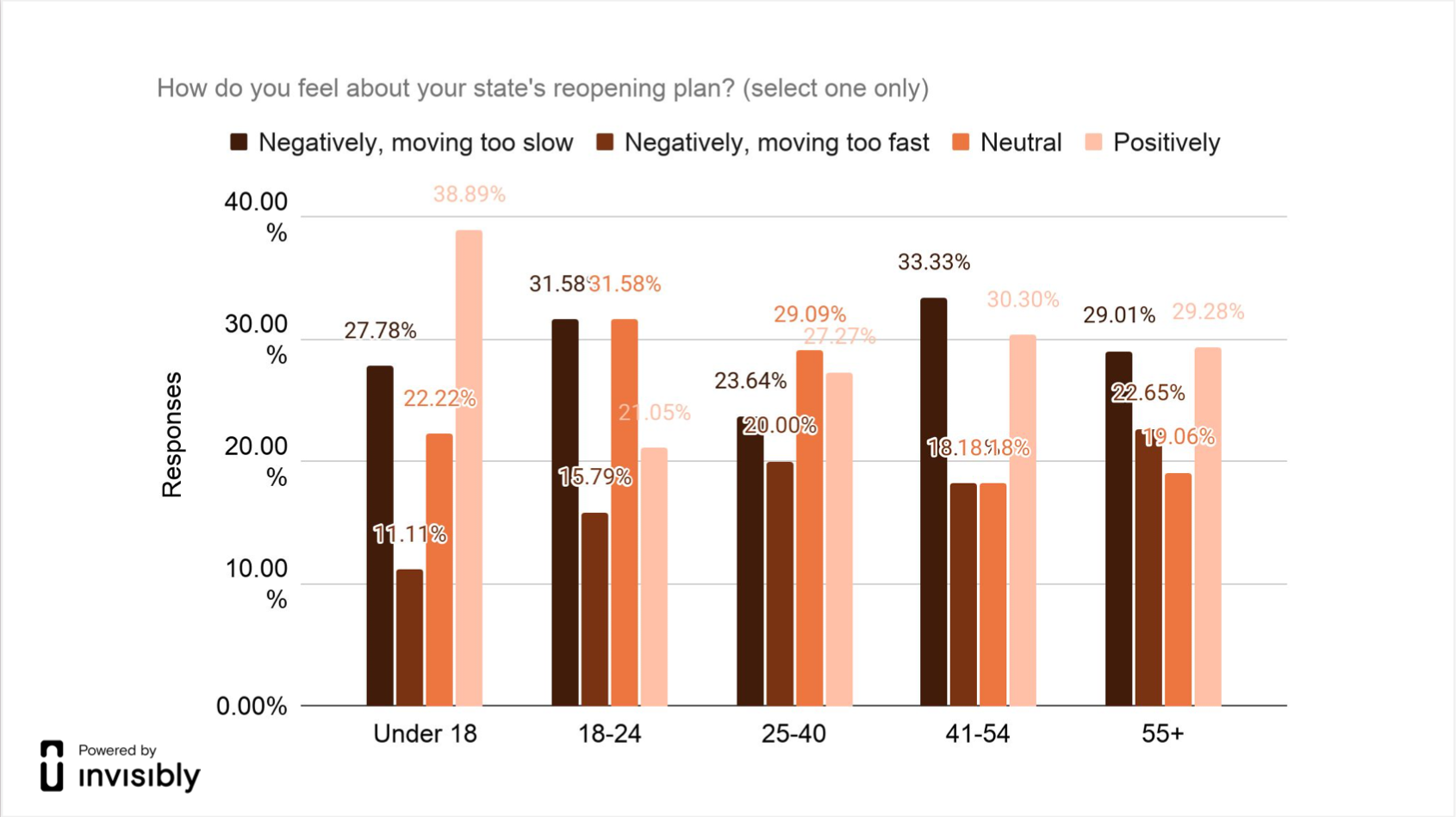 The majority of respondents used their stimulus checks to pay bills. 44% of them were under the age of 18, 37%
between the ages of 18-24, 47% between 25-40, 59% between 41-54 and 55% of respondents over 55 used their
stimulus check for bills. 28% of respondents under 18, 53% between 18-24, 38% between 25-40, 27% between 41-54
and 32% of respondents over 55 used their stimulus for savings. 22% of respondents under 18 used their
stimulus check for travel.
The majority of respondents used their stimulus checks to pay bills. 44% of them were under the age of 18, 37%
between the ages of 18-24, 47% between 25-40, 59% between 41-54 and 55% of respondents over 55 used their
stimulus check for bills. 28% of respondents under 18, 53% between 18-24, 38% between 25-40, 27% between 41-54
and 32% of respondents over 55 used their stimulus for savings. 22% of respondents under 18 used their
stimulus check for travel.
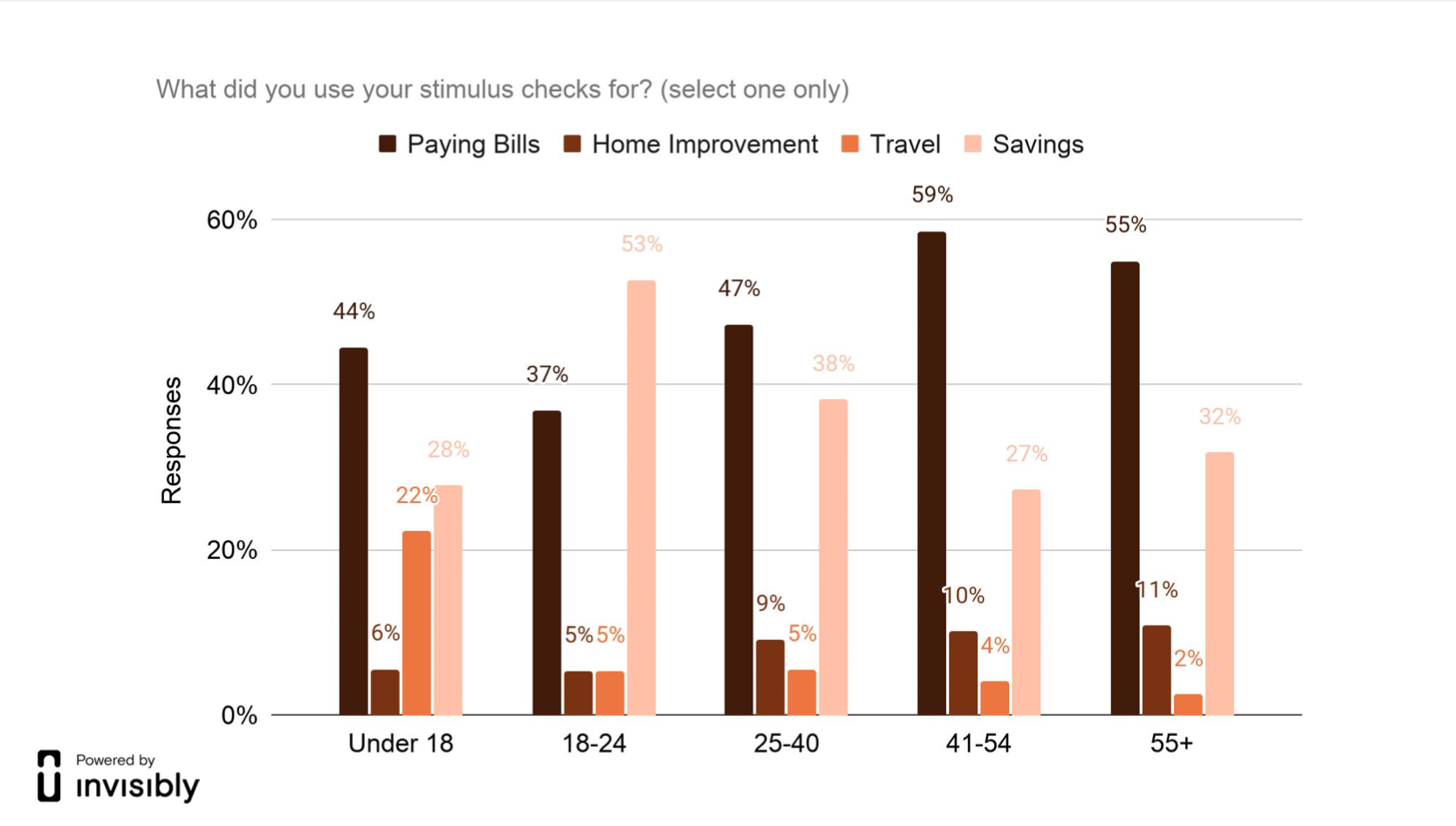
The Process
From March 24th to April 7th, Invisibly surveyed 1277 people regarding their opinions about the trustworthiness of the CDC, how they feel about their state’s reopening plan, and what they did with their last stimulus check. We compared this survey’s data with results from an identical one conducted from July to August 2020 to see if there has been any shift in behavior. We also asked people about their age and gender to see how that factored into the responses.
We Asked
- How trustworthy is information from the CDC?
- How do you feel about your state’s reopening plan?
- What did you use your stimulus checks for?
- What is your age?
- What is your gender?
Discussion
Based on our survey results, we see once again how fickle the public can be. Even though the vaccine rollout is underway and moving fast, 10% more people now have less trust in the CDC than they did just 10 months ago. Interestingly, the public thought their state’s reopening was going too fast ten months ago, yet today, the majority have a negative view of their state’s reopening because they think it’s going too slow. As we move further into the second year of the pandemic, and with states beginning to reopen, we’re likely to see more shifts in behaviors and opinions. It does seem that people still have some flexibility when it comes to money, although more than half of used their last stimulus check to pay bills, there is still a large percentage of people who could afford to put those funds into savings or use it for home improvements.
Invisibly Realtime Research surveys differ from traditional online surveys in that the questions are shown to the user on web pages in place of an ad (Figure 1). Unlike Google Surveys, which block access to content until the questions are answered, Realtime Research surveys are optional, thus ensuring that participants are responding voluntarily.

Invisibly
Use your data to access premium content you love.
